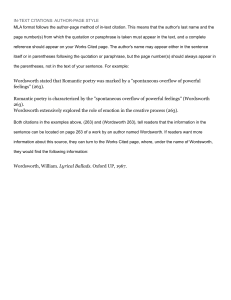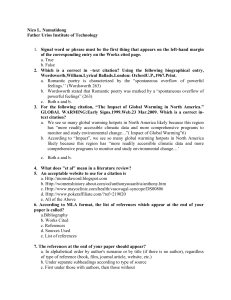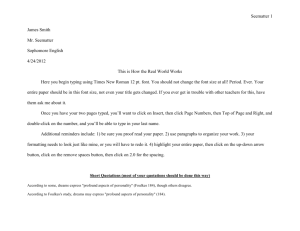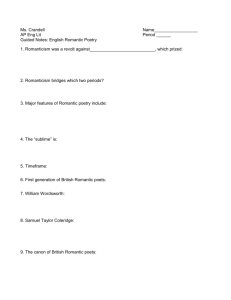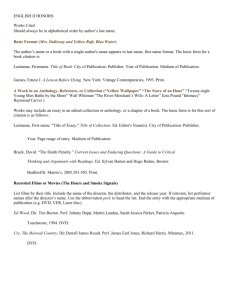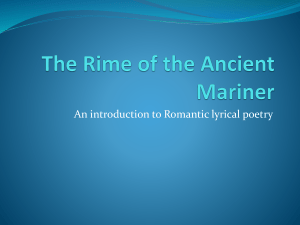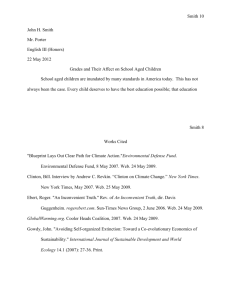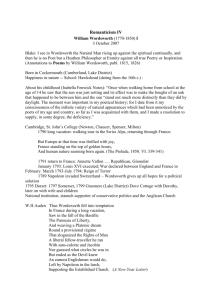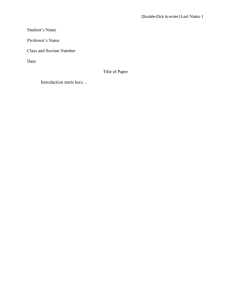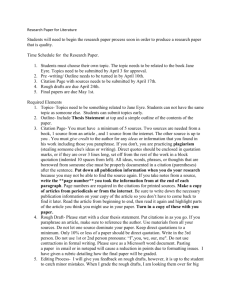Sample Internal Citations
advertisement
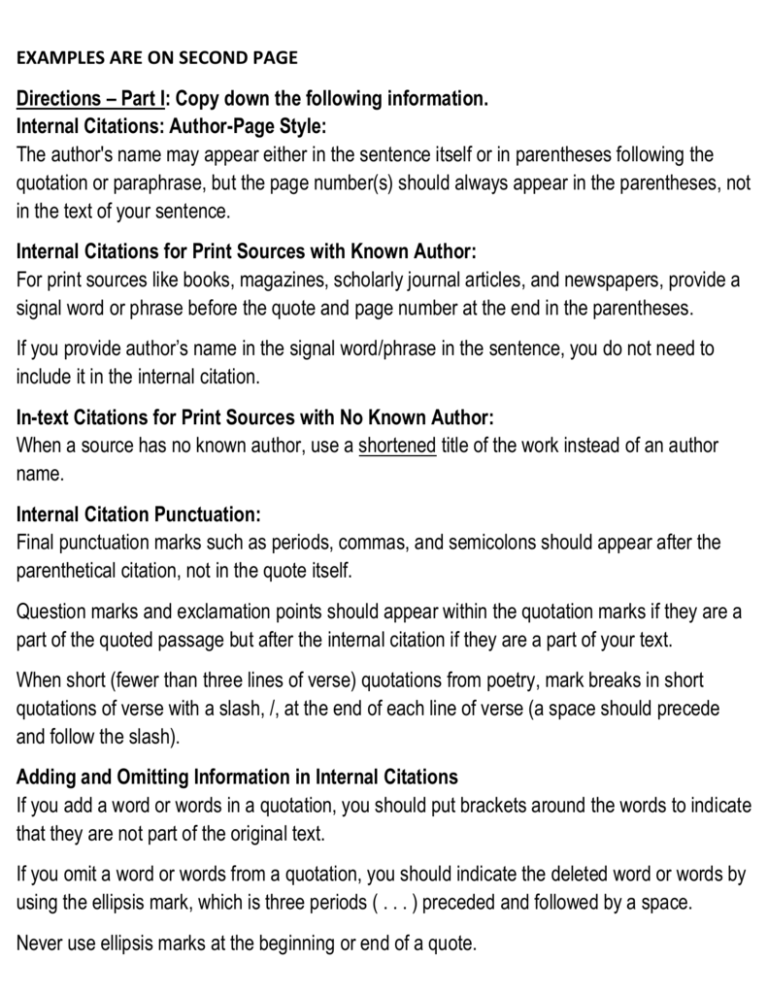
EXAMPLES ARE ON SECOND PAGE Directions – Part I: Copy down the following information. Internal Citations: Author-Page Style: The author's name may appear either in the sentence itself or in parentheses following the quotation or paraphrase, but the page number(s) should always appear in the parentheses, not in the text of your sentence. Internal Citations for Print Sources with Known Author: For print sources like books, magazines, scholarly journal articles, and newspapers, provide a signal word or phrase before the quote and page number at the end in the parentheses. If you provide author’s name in the signal word/phrase in the sentence, you do not need to include it in the internal citation. In-text Citations for Print Sources with No Known Author: When a source has no known author, use a shortened title of the work instead of an author name. Internal Citation Punctuation: Final punctuation marks such as periods, commas, and semicolons should appear after the parenthetical citation, not in the quote itself. Question marks and exclamation points should appear within the quotation marks if they are a part of the quoted passage but after the internal citation if they are a part of your text. When short (fewer than three lines of verse) quotations from poetry, mark breaks in short quotations of verse with a slash, /, at the end of each line of verse (a space should precede and follow the slash). Adding and Omitting Information in Internal Citations If you add a word or words in a quotation, you should put brackets around the words to indicate that they are not part of the original text. If you omit a word or words from a quotation, you should indicate the deleted word or words by using the ellipsis mark, which is three periods ( . . . ) preceded and followed by a space. Never use ellipsis marks at the beginning or end of a quote. EXAMPLES ARE ON SECOND PAGE Directions – Part II: Now determine whether or not the statement is true or false. Mark the answer next to the statement on your paper. Internal Citations Practice: Using a pencil, make the necessary corrections. 1. Wordsworth stated that Romantic poetry was marked by a "spontaneous overflow of powerful feelings" (263). 2. Romantic poetry is characterized by the "spontaneous overflow of powerful feelings" (Wordsworth 263). 3. Wordsworth extensively explored the role of emotion in the creative process (263). 4. Wordsworth stated that Romantic poetry was marked by a "spontaneous overflow of powerful feelings" (263). 5. Romantic poetry is characterized by the "spontaneous overflow of powerful feelings" (Wordsworth 263). 6. Wordsworth extensively explored the role of emotion in the creative process (263). 7. We see so many global warming hotspots in North America likely because this region has “more readily accessible climatic data and more comprehensive programs to monitor and study environmental change . . . ” (“Impact of Global Warming” 6). 8. According to some, dreams express "profound aspects of personality" (Foulkes 184), though others disagree. 9. According to Foulkes's study, dreams may express "profound aspects of personality" (184). 10. Is it possible that dreams may express "profound aspects of personality" (Foulkes 184)? 11. Smith concludes, "Of all the things that happened there / That's all I remember" (11-12). 12. According to some, dreams express “profound aspects of personality” (Foulkes 184), though others disagree. 13. Jan Harold Brunvand, in an essay on urban legends, states: "some individuals [who retell urban legends] make a point of learning every rumor or tale" (78). 14. In an essay on urban legends, Jan Harold Brunvand notes that "some individuals make a point of learning every recent rumor or tale . . . and in a short time a lively exchange of details occurs" (78).
